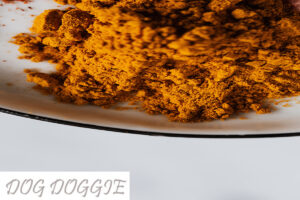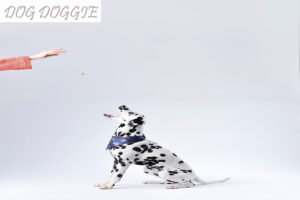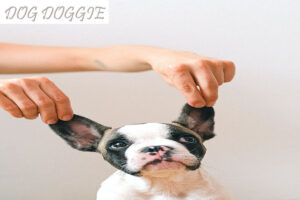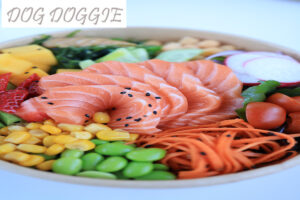Dog food is available in various forms, with dry kibble and canned food being the most widely consumed. However, wet dog food offers several benefits to your four-legged friend and should be considered part of your pet’s daily diet.
Many of these pet food brands have been shown to utilize deceptive marketing strategies to make their food appear healthier than it is while still using low-quality ingredients. You don’t have to worry; we’ll explain what to look for in high-quality wet dog food and how much to feed a dog wet food for better health. We researched it and can now share our most useful recommendations with you.
The Differences Between Dry and Wet Foods
Dry and wet foods are popular for dog owners looking to feed their pets. But there are some significant differences between the two kinds of meals. Wet foods tend to have a higher water content, which can help combat dehydration in dogs that spend a lot of time outdoors or live in warmer climates.
On the other hand, dry foods usually have more protein than wet foods and offer a more balanced diet if you do not want to supplement with anything else. Dry foods also may be easier on teeth and gums because they provide crunchy kibble rather than mushy chunks.
Why Should I Feed Wet Food to My Dog?
Wet food may be a better option than dry kibble if you’re looking to feed your dog a more balanced diet. Wet foods contain higher levels of water and protein, which helps to keep your dog hydrated and full of energy. Some dogs also prefer canned food because it’s more flavorful. However, there are some disadvantages to feeding canned food instead of dry kibble. First, wet food can cause stomach upset in dogs with sensitive stomachs. Canned food is not the greatest option for your dog if they experience stomach issues or allergies. Second, the high-water content can lead to an increase in diarrhea. Thirdly, when fed as a main meal or only with dry kibble, moistening dry kibble with water before serving can help make it more palatable.
How much to feed a dog wet food?
You may be wondering how much to feed a dog wet food. The answer depends on the dog’s size, age, activity level, and health. If you’re unsure how much to feed a dog, consult a veterinarian or professional trainer.
Just as people have different dietary needs, so do dogs. It’s important to feed them high-quality foods that provide all of the nutrients they need and avoid feeding them human leftovers as this could lead to weight gain and/or deficiencies in certain nutrients.
As a topping or mixer, wet dog food
You can give wet food as a topping if you don’t want to give up dry food. Simply layer some of the moist food on top of your pet’s favorite kibble after pairing it with that. Simply follow those directions when using wet food as a topper since the feeding recommendations above for K95 Turkey also include advice for feeding it with a dry product.
The enhanced taste of the meal is a major benefit of using wet food as a topper for your pet. When feeding a picky dog who isn’t always in the mood to eat, it can be helpful to mix in some wet dog food every once in a while to pique its interest.
The concept of using wet food as a mixer is quite similar to that of using it as a topper, except that here the kibble is mixed with the wet food. Adding a topper to your picky pet’s meal may not encourage dogs to eat it completely, but mixing them combined could make them more interested in eating it.
Frozen canine treats
Making frozen treats out of wet dog food is an interesting way to mix things up without committing to a complete diet change. Find an ice cube tray or mold, portion out some of the meal, and freeze it for a few hours until it gets solid. It also allows you to give your pet a new treat every time by changing the flavor.
What else should I think about when figuring out how much to feed a dog wet food?
1. Size and breed of the dog
The more food a dog needs daily, the bigger it will get. Due to dogs’ higher energy levels or faster metabolisms, some breeds may also need more food than others. If you have a larger dog, the cost of feeding only wet food may be a problem. Wet food is frequently more expensive than dry food.
2. Age of the dog
Younger canines require more food than older ones do. Dogs’ metabolisms decrease with aging. With age, you might wish to reexamine your dog’s calorie requirements.
3. Weight of the dog
You should work with your veterinarian to develop a food plan customized to your dog if it is not at its ideal weight. In order to guarantee that the weight is added properly if your dog needs to gain weight, you should work with your veterinarian. Your veterinarian can assist with a diet and exercise plan if your dog needs to shed a few pounds to get back on track. Inquire with your veterinarian about your dog’s food requirements throughout the year. To keep warm and maintain their energy level during the winter, your dog may require a few additional calories.
4. The activity of the dog
Your dog may require extra calories if it runs, hikes, or participates in sports like agility, flyball, or dock diving, especially while competing. Consult your vet or an experienced nutritionist to make sure your dog is in the greatest possible condition to take part and succeed.
5. How often does my dog eat during the day?
Some dogs eat twice daily, while others may have three to four tiny meals. You might divide your dog’s food into more frequent portions if they belong to a breed sensitive to bloat. Do not forget to divide the entire amount of food your dog requires each day by the number of meals you will be providing. You won’t unintentionally feed your pet too much this way.
Conclusion
Your dog’s nutrition is very important for maintaining general health and preventing sickness. To choose how much to feed a dog wet food, use these guidelines as a guide. Speak to your veterinarian or a certified nutritionist if you have any queries about the diet you are providing for your dog or the foods you are using. When your pet is well-fed and nurtured, it will live a longer, happier, and healthier life!
Read More:











